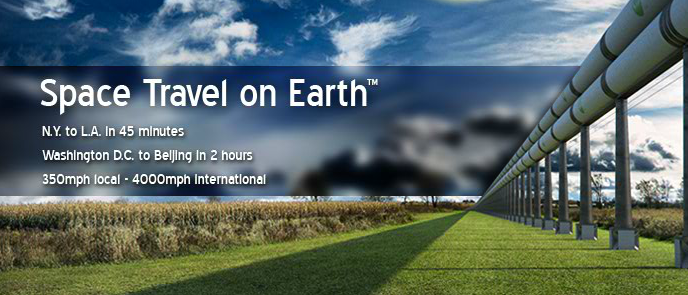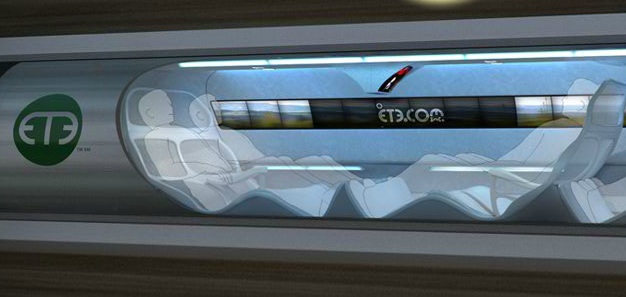London To New York In An Hour, By 4,000Mph ‘Vactrain’

From the west to the east coast of the United States in no more than 45 minutes, London to New York in just an hour, Washington DC to Beijing in a little over two hours through travelling at speeds of up to 4000 miles per hour. It sounds entirely implausible, but according to company ET3 and its ‘vactrain’ concept, it’s within our reach and it could well be the future of long-distance transportation.
Described by ET3’s founder and CEO Daryl Oster as “space travel on Earth”, in theory ‘vacuum trains’ could provide “50 times more transportation per kWh (kilowatt hour) than electric cars or trains” and be constructed at just a tenth of the cost of high-speed rail due to only using 1/20th of material typically needed for high-speed rail construction as a result of using much lighter vehicles.
 The concept of the ‘vactrain’ is nothing entirely new. In fact, American engineer Robert Goddard designed detailed prototypes of evacuated tubes and maglev (magnetic levitation) technology in the 1910s, while the 1990s saw emeritus professor Ernst Frankel of mechanical engineering and ocean engineering from MIT test a similar vacuum system that eventually allowed objects to travel at twice the speed of those being met with air resistance in normal conditions.
The concept of the ‘vactrain’ is nothing entirely new. In fact, American engineer Robert Goddard designed detailed prototypes of evacuated tubes and maglev (magnetic levitation) technology in the 1910s, while the 1990s saw emeritus professor Ernst Frankel of mechanical engineering and ocean engineering from MIT test a similar vacuum system that eventually allowed objects to travel at twice the speed of those being met with air resistance in normal conditions.
Now, ET3 is set to bring the concept of vactrain's much closer to reality. Combining evacuated tube transport technology with magnetic levitation, the company has laid out its plans to construct car-sized passenger 'capsules' that travel along air-less tubes of 1.5m in diameter. As the company's website details, “air is permanently removed from the two-way tubes that are built along a travel route... Airlocks at stations allow transfer of capsules without admitting air”, while “linear electric motors accelerate the capsules, which then cost through the vacuum for the remainder of the trip using no additional power.”

Essentially, as Oster keenly points out, it's space travel on Earth. To emphasise exactly how energy efficient the vacuum of space (or indeed, ET3's transatlantic tubes) is, it takes roughly 10 times the energy to get from our surface to geosynchronous orbit (around 22,000 miles) than it does to get from the moon to the same orbit (a distance of 238,900 miles) where the vacuum of space can carry a space capsule thousands of miles with zero air resistance to speak of.
So far, Oster has sold 60 licenses for his patented evacuated tube transport (ETT) technology, including 12 to China, while he hopes the train could be ready in as short as 10 years time.
Source: ET3

